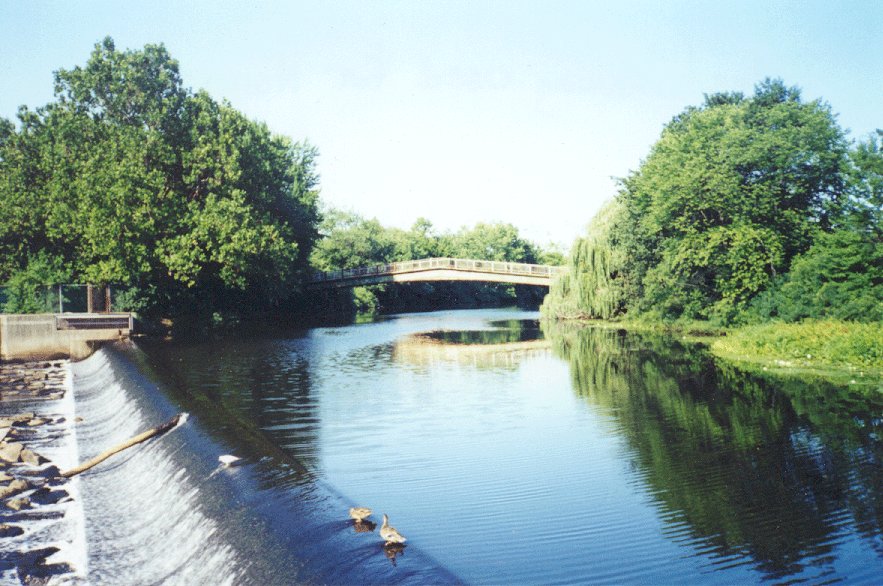Fish ladders employ several strategies to make passage easier. Many dams create a quick change in elevation, so fish ladders will spread this change over a longer path, the same way that wheelchair ramps are longer and incline more gently than stairs. Water flowing through a dam may also be moving too fast, so fish ladders use structures such as weirs, baffles, and barriers that change how the water moves through the ladder. The aim of these structures is commonly to produce specific areas where water moves against the overall direction of flow, creating turbulence (Kamula, 2001). Turbulent water loses energy as it sloshes against itself, and overall flow velocity is reduced. Below are some different kinds of fish ladders.
 |
| www.dfg.ca.gov |
 |
| commons.wikimedia.org |
While there are a few basic types of fish ladder, hybrid styles and variations abound because each ladder must be built taking into account the size of the stream, its hydrology (such as natural seasonal variations in flow), and the species of fish that must make the passage. Some species, like salmon, are adapted to leap over rocks and through rapids, but others require slower water and gentle slopes. Different fishes also prefer to swim at different depths, but of course altering the depth of water in a ladder system changes how the water flows. You can see how designing a fish ladder can become complicated quickly. Ladders must also be easy to find: often the opening to the ladder is only a small fraction of the total width of the dam, and since many species naturally follow the fastest flow to get upstream (FAO), a poorly designed dam system may lead fish into a turbine outlet and away from the ladder.
 |
| www.city-data.com |
Here on the Charles, the Watertown Dam (above) contains a fish ladder to allow herring and other species that spawn upstream to pass. The fish ladder is housed in the concrete structure seen at the far end of the dam. The dam currently serves no purpose (besides looking quite lovely), but while removal would certainly be the best option for spawning fish, concerns over polluted sediment trapped behind the dam make this unlikely for the moment.
When Sean and I visited the dam more than a week ago, we did not see any fish attempting to use the ladder, though the large congregation of gulls directly below the dam suggested that fish were there. With any luck, over the next few weeks herring will begin to find the small outflow of the ladder, splash through the 10-15 chambers, emerge triumphant into the main stream, and give each other high-fives with their fins. Nice!
Fish Passages: Design, Dimensions, and Monitoring. Food and Agriculture Organization of the United Nations (FAO) and DVWK. 2002. Retrieved May 10 2013.
Kamula, Rittaa. Flow over weirs with application to fish passage facilities. 2001. Retrieved May 10, 2013. http://herkules.oulu.fi/isbn9514259777/html/chapter1_2.html
What is a Fish Ladder and Weir? Michigan Department of Natural Resources. Retrieved May 10, 2013. http://www.michigan.gov/dnr/0,4570,7-153-10364_52259_19092-46291--,00.html.

No comments:
Post a Comment